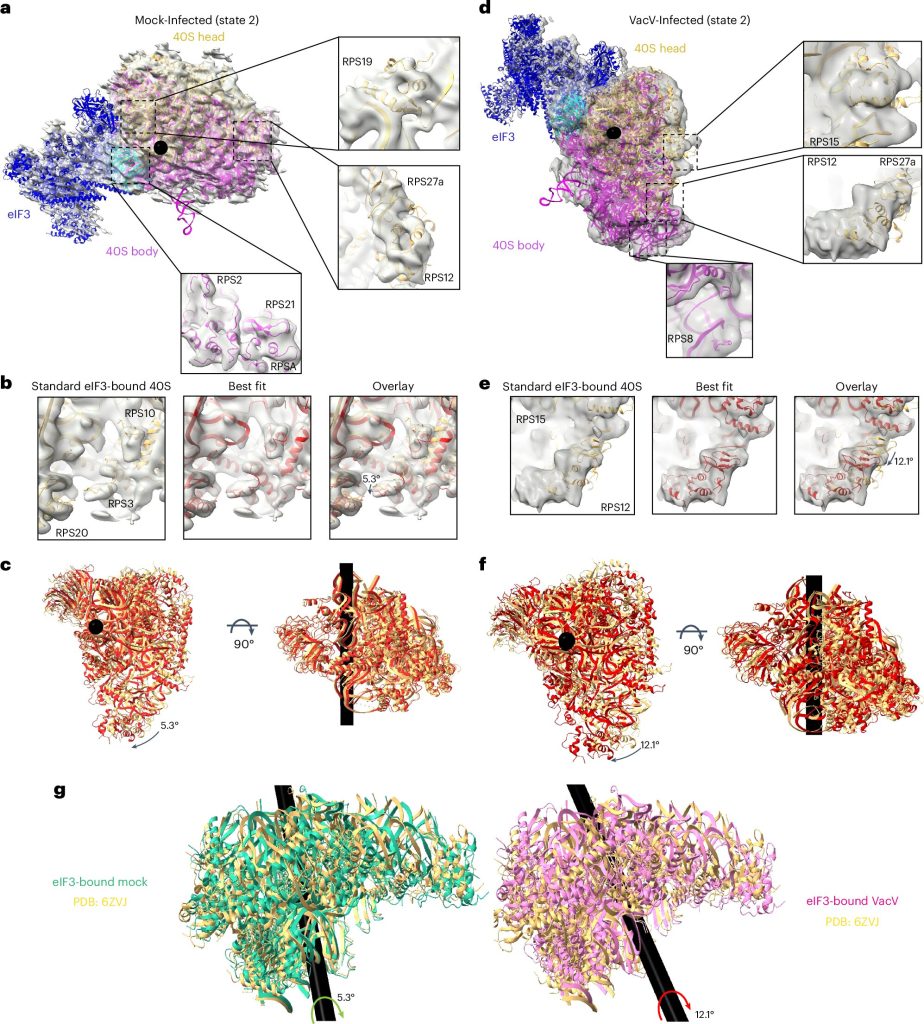In a delightful new study, scientists have taken a closer look at how poxvirus plays tricks on our cells to multiply and spread. Their findings not only shed light on complex biological interactions but also hint at potential breakthroughs in antiviral treatments, making science both fascinating and hopeful!
Northwestern Medicine researchers have embarked on an exciting journey, revealing the crafty tactics of poxviruses, which are infamous for causing diseases like smallpox. One of the hallmark features of these viruses is their clever use of host ribosomes—the tiny protein factories in our cells. But how exactly do these sneaky viruses manage to take control of our cellular machinery? That’s where the adventure begins!
Led by Dr. Derek Walsh, a passionate microbiology expert, the team’s research, published in Nature Microbiology, dives deep into the interaction between viral and host mRNAs, or messenger RNAs. “It’s intriguing that all viruses, even the highly self-reliant poxviruses, still need to exploit our host ribosomes to thrive,” Dr. Walsh remarked, highlighting the duality of life forms in this biological story.
In this comprehensive study, the researchers utilized advanced techniques like RNA sequencing and polysome profiling in infected cells, which allowed them to chart the tumultuous relationship between viral and host mRNAs. They uncovered that as the infection progresses, a process called “host shutoff” occurs. This phase preferentially favors viral mRNA, but interestingly, some of our host mRNAs manage to get translated too—albeit through a non-standard initiation method!
By employing cutting-edge cryo-electron microscopy, the team visualized significant shifts in how these 40S subunits operate in infected cells. “We found that poxvirus infection alters the motion of the 40S head domain during the initiation process, showcasing just how adaptable these viruses can be,” Dr. Walsh explained.
Delving deeper, the researchers identified specific cellular helpers that the poxvirus relies on for its survival—the small ribosomal protein known as RACK1 and the essential eukaryotic Initiation Factor eIF3. This discovery enhances our understanding of how viruses effectively manipulate our cellular systems, allowing them to produce the proteins they need while simultaneously dampening our host defenses.
“This research reveals the intricate dance between poxviruses and host translation mechanisms during later stages of infection,” Dr. Walsh stated. “It serves as a great example of the complex ways ribosome functions can be adjusted.”
Looking ahead, Dr. Walsh and his team are excited to explore the role of RACK1 further, along with 79 other ribosomal proteins that remain shrouded in mystery. “Deciphering what RACK1 is doing during infection is just the start of our journey,” he said with enthusiasm.
More information: Chorong Park et al, Distinct non-canonical translation initiation modes arise for specific host and viral mRNAs during poxvirus-induced shutoff, Nature Microbiology (2025). DOI: 10.1038/s41564-025-02009-4
If you would like to see similar science posts like this, click here & share this article with your friends!


